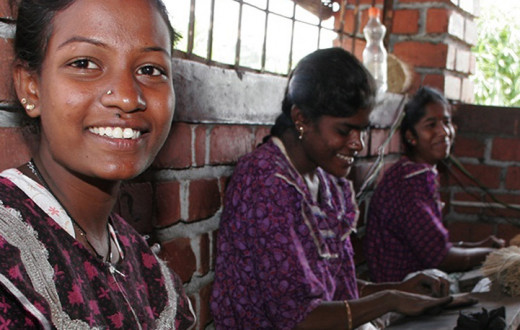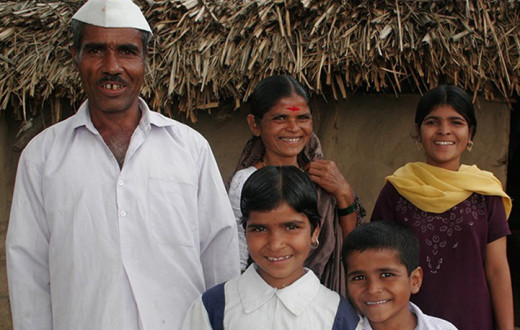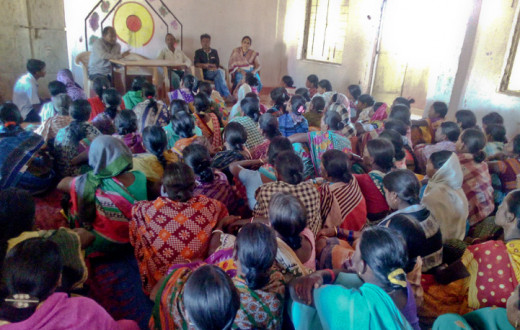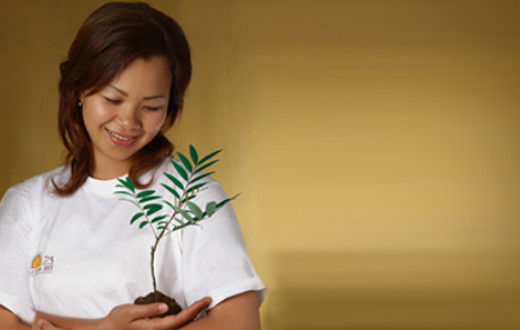The problem
- Currently, the rural part of Odisha is facing multiple social, economic and environmental challenges.
- The population census of 2011 revealed that out of total 96.6 lakh households in Odisha, only 22.4% of them have drinking water sources in their premises while 42.2% households are using water sources near their premises and 35.4% away from their households.
- 78% of the households in the state do not have any latrine within their premises, and 76.6% of the households are still in the habit of defecating in the open.
- The child sex ratio in Odisha is as low as 934:1000 as per 2011 census. The infant mortality rate as per 2013 data stands at 51 per 1000 live births while the national average is 40.
- Maternal Mortality Ratio (MMR) according to 2012-13 is 235 per 1,00,000 live births in Odisha, compared to 178 in the country. The child labor in the state as of 2007-08 is 3.4% as against 2.4% in the country.
Where we come in
The Art of Living partnered with the Panchayati Raj Department of the government to develop selected 50 Gram Panchayat in 11 districts of Odisha through its Integrated Community Development (ICD) initiative. Through the ICD, we aim to support the Odisha government in its “Ama Gaon, Ama yojana” (Our Village – Our Plan) project to foster holistic economic, social, cultural and personal growth in rural Odisha.
Partners
- State Institute of Rural Development
- Panchayati Raj Department, Government of Odisha
- Department of Social Security & Empowerment of Persons with Disabilities (SSEPD), Government of Odisha
Why we do this
We strive to make development a community-led and community-owned process. It aims at the optimal utilization of resources and convergence of various partners and stakeholders like village committees and government organizations for social change.
How we work
Creating holistic and self-sustainable model villages
The Integrated Community Development project focuses on creating activities to enhance the economic status of villagers by providing them training in agriculture, vocational skills, and education. The project aims to create sustainable and holistic model villages that provide local villagers various provisions to ensure their growth and well-being in all aspects of life.
For good health, ICD leaders provide hygiene education, sanitation provisions, medical facilities as well as food and lifestyle guidance. Moreover, the ICD plan ensures that villagers are provided with the basic amenities of electricity and water. For local culture and heritage preservation, the learning of local art and culture is promoted. Local women also are encouraged to sell their arts and crafts products to earn viable incomes.
Intensive efforts are being made through this project for convergence-based implementation of various government schemes and programs through community mobilization with the objective of making them into model Gram Panchayat.
Community empowerment
The core component of ICD is people. Our team works in capacity building training for community-led ownership and work to enhancing local people’s participation in the programs implemented at the Gram Panchayat level. We also work for women and child empowerment by providing them opportunities to represent their issues and concerns to the GP level. Moreover, special programs are designed for youth empowerment, mentoring and skill building.
Community Capability Building – Inside Out
Through a process of emotional, spiritual and economic transformation, the primary focus of The Art of Living is on creating extraordinary leaders out of ordinary people. These leaders become ambassadors of community change.
The success of our model depends on our methodology of collective endeavor. Our campaigns, Nav Chetna Shibir and Bal Chetna Shibir, are primary outreach programs. They are instrumental in bringing people together and in inspiring them to serve and participate in the development of their communities. The workshops bring a renewed and increased mental clarity, confidence and focus to find creative and innovative solutions for challenges faced in the rural areas – be it substance abuse, infrastructural problems or lack of essential amenities.
Our Impact
- Capacity Building: 21,347 people sensitized through 766 Nav Chetna Shibirs in 50 Gram Panchayats.
- Youth empowerment: 760 youth empowered through the Youth Leadership Training Program (YLTP). Apart from the leaders of YLTP, 1,253 youths also became Bharat Nirman Volunteers.
- Community representation/People Action Groups: 132 village and gram panchayat representative committees formed.
- De-addiction – 17 De-addiction rallies were held with 1,670 participants to create awareness on consumption of alcohol.
- 22 habitual addicts have turned non-addicts and become trainers advocating the ill-effects of alcoholism and substance abuse.
- Revival of Gram Sabhas: 18 Gram Sabhas with 2,648 participants and 28 Sadharan Sabha with 8,565 participants were held to engage local communities in active participation and discussion-making.
- Swachh Bharat Mission (SBM) – More than 1,800 Individual Household Latrines (IHHL) built across 12 GPs to make India open defecation-free. 13,158 households were re-surveyed in 14 GPs on the status of IHHL.
- One of our Machida Village of Machida GP (Jharsuguda district) became Open Defecation Free (ODF) on May 15, 2017.
- MGNREGA – 2,629 job demands created under MNEREGA.
- Green Gram Panchayats: 320 participants of 6 GPs (in 4 districts) planted various saplings in their respective GPs to promote Green Gram Panchayat.











